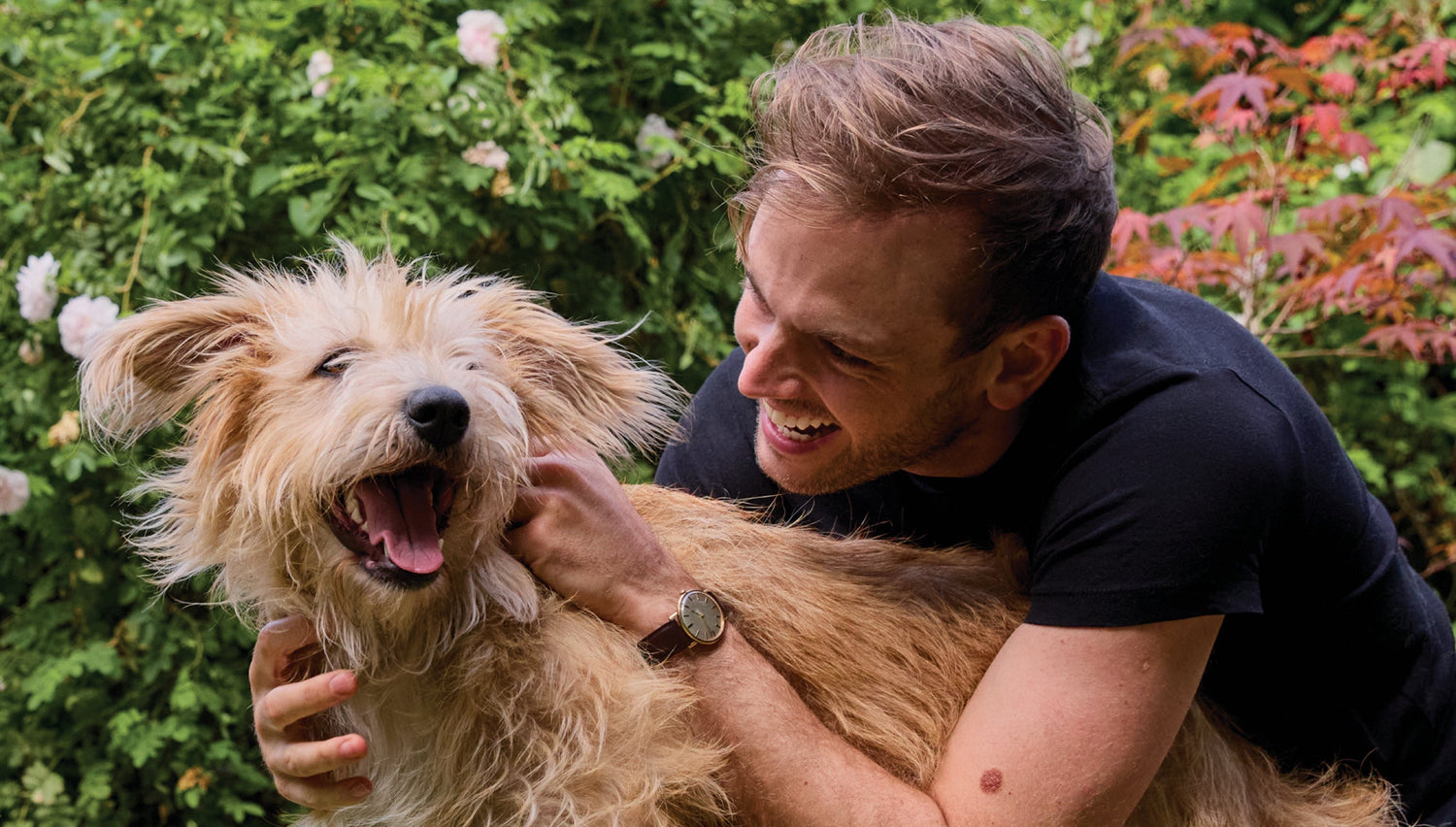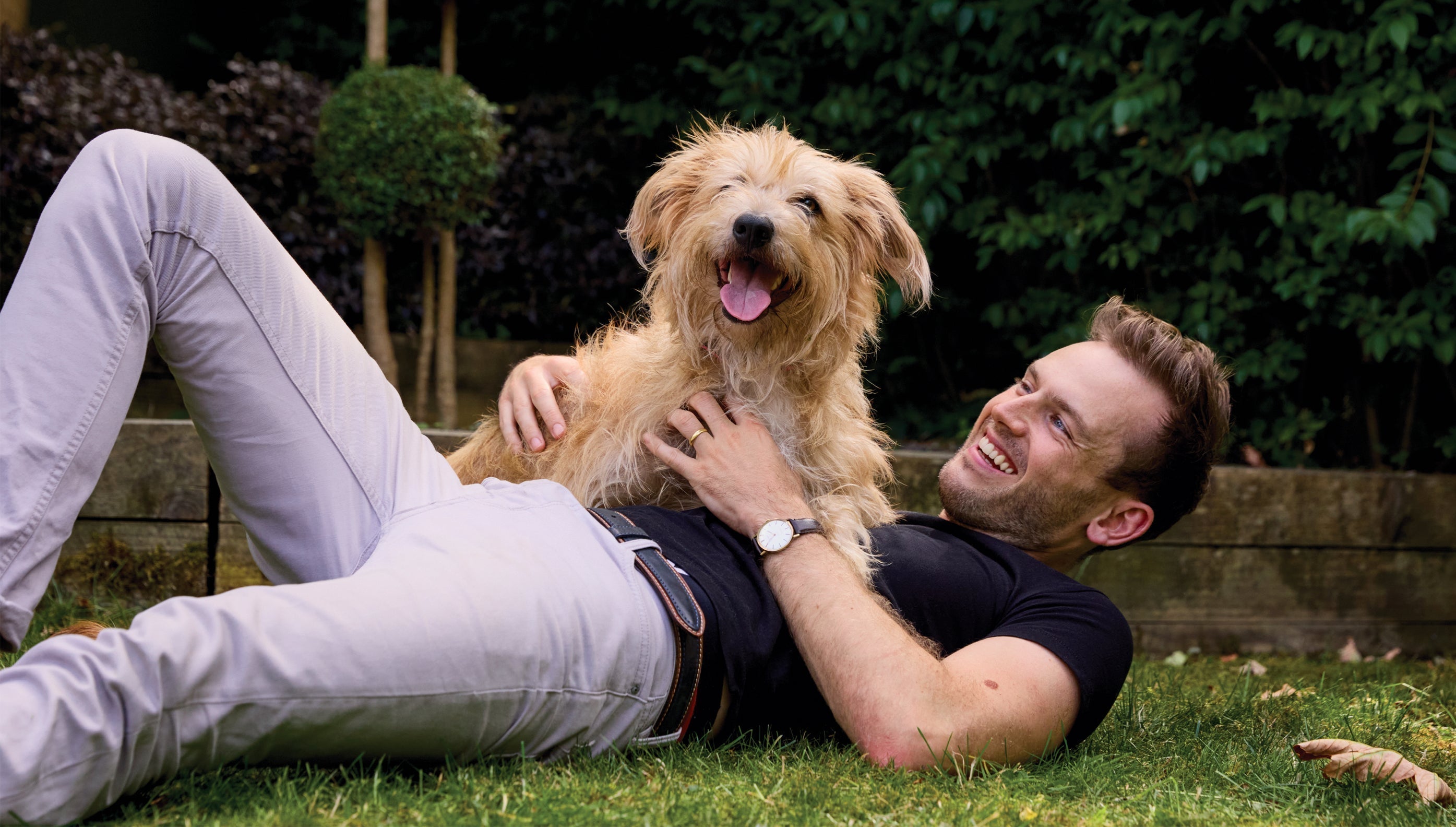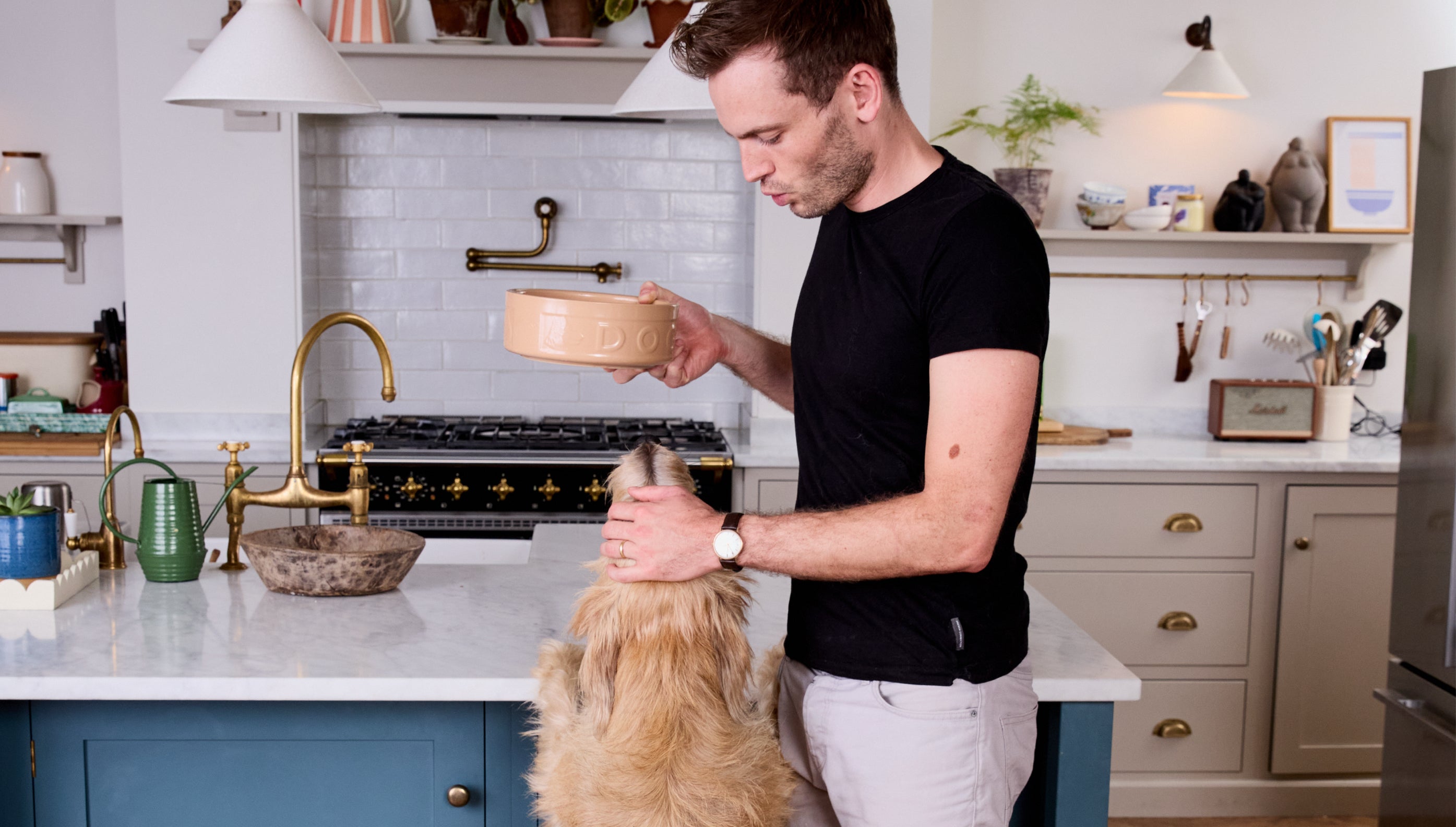Fleas are common pests that can affect dogs, cats and even, sorry to say, their owners. Not fun. Luckily, in most cases you can treat these irritating parasites by yourself, without the assistance of a vet (unless, of course, you require further advice).
Dog parents, read on to learn the best way to get rid of dog fleas, according to pet expert, Rory the Vet.
MEET RORY THE VET

We’ve partnered up with animal whisperer and renowned veterinarian, Dr Rory Cowlam, to share his wisdom when it comes to all things furry. And boy, does this man know his stuff.
Starting with his degree from the Royal Veterinary College, Rory has since co-starred in the CBBC’s series The Pet Factor, shared his knowledge on the likes of Blue Peter and written all about it in his book, Secret Life of a Vet.
Follow him on Instagram
Why fleas are bad for your dog
We all know that fleas are bad for your dog. Who wants to be bitten incessantly by a bug? But there are other ways fleas can affect dogs that go beyond an annoying itch.
I have seen dogs chew and scratch themselves raw when they are suffering with fleas. They can end up with horrible sores, scabbing and hair loss. Sometimes fleas can impact their behaviour. They may struggle to settle, act anxious or even show aggressive behaviour.
Other potential health dangers that may come with fleas include:
• Allergic reactions – if your dog is allergic to flea saliva
• Blood loss – for young or weak dogs, blood loss could be incredibly serious
• Tapeworm - if your dog digests a flea carrying a tapeworm. If your pet has fleas, make sure you get them checked out for worms also!
• Secondary infections
• Disease

How do dogs catch fleas?
The majority of fleas we see on dogs are actually ’cat fleas’. They have been transmitted by various other animals, not just cats, but foxes and other dogs too.
Fleas can jump approximately 8 inches onto their host, so they can easily get from dog to dog. They can also live in an environment like their bedding, your carpet or cracks and crevices for up to a year as a larvae (off-white tiny worms that hatch from flea eggs).
Can humans catch fleas from dogs?
Fleas generally can’t live on humans (phew!). They need hairier skin to survive. Although, in high level infestations, humans will often get bitten. So yes. Humans can catch fleas from dogs, but they aren’t likely to stick around. Especially not if there is a much better host about, like your pooch!
What do fleas look like?
Fleas are small, flat insects that have very large hind legs which allow them to propel themselves a great distance (at least, for their size!).
They move quickly! Blink and you could miss one.

How to tell whether your dog has fleas
• Scratching: Occasional scratches are normal. Anything more could be a sign of fleas. Remember that there may be other reasons why your dog may scratch.
• Black or red spots: If you spot these in your dog’s coat, they could be flea dirt (flea faeces)
• Restlessness: Due to being uncomfortable
• Hair loss: Due to excessive scratching
• Flea appearances: They’re easier to spot in light coated dogs. Read further to learn what to look out for.
How to inspect your dog’s fur for fleas
1. Using a flea comb. Run it through your pet’s coat, making sure to cover their lower back and belly. Fleas hide in these areas the most.
2. If you don’t have a comb, part the hair down to the surface of their skin and gently walk through the hairs.
3. As you do this, look out for both adult fleas and flea dirt. Flea dirt often looks like little C shaped black flecks. Fleas, when put in water, will often bleed a brown/red colour. (If you’re using a comb and you’ve caught a couple of fleas, I would suggest dipping the comb in a dish of warm soapy.)
TIP: Consider giving your pooch a chew stick to keep them occupied and still while you do your inspecting!

How to treat dog fleas
And now – the big question – how to get rid of fleas!?
There are various treatments you can use to treat dog fleas. First and foremost, consult your vet to find out which treatment is most suitable for your dog – and use this product, avoiding any other product you find elsewhere. Your vet will be able to recommend the most effective remedy. Note that fleas can live around 7-14 days, dividing their time between on your dog or laying eggs.
Types of treatments include:
• Shampoos: Personally – I am not a fan of medicated flea shampoo treatments. In my experience, they aren’t very effective at getting rid of fleas – they only seem to deal with the fleas that are currently living on your dog. I recommend using a soothing shampoo for the skin to ease any irritation your dog may be suffering with.
• Collars: Treatment is impregnated into the plastic, which is slowly released when on your dog. Collars variable in their efficacy; some work well, others don’t. They can help prevent fleas but usually don’t offer much help for dogs who are already dealing with them.
• Spot-on treatments: These are very effective at clearing flea infestations. There are a wide range of spot-on products to use, so make sure you discuss with your vet the best option for you.
• Tablets: These are my go-to. I‘ve found that oral medications are generally the most powerful and quickest way to treat flea infestations. You can buy tablets in a pet shop, but again, I must reiterate that the most successful treatment will be the one you receive from your vet. Flea tablets often protect your dog from a whole host of parasites for the duration of one to three months.
Treat your other pets
If your dog has fleas, then it’s likely your other pets do too. Make sure you ask your vet about the appropriate treatment required for each individual pet. What is effective for your dog may in fact be toxic for your cat.

How to help prevent fleas
As a dog parent, actively practicing methods that will help prevent your dog from catching fleas is the best way to move forward. Here are a couple of preventative measures that should help keep fleas out of your home and off your pooch.
1. Groom your dog regularly
You should already be grooming your dog on a regular basis. (Click here for a guide on how often you should bathe yours!) When it comes to fleas however, freshly cleaning your dog does nothing to deter fleas from nesting on their coat. However, now you know how to spot fleas, bathing is the perfect time to keep an eye out for them.
2. Vacuum your home thoroughly
90% of flea infestations are in the environment. Hoovering often and thoroughly can help remove eggs and larvae and, ultimately, the spread of fleas.
3. Wash your dog’s bedding
For the same reasons as above, washing your dog’s bedding regularly and thoroughly (on a 60 degree cycle) is a good preventive measure as it gets rid of any flea larvae or eggs that are lying dormant.
4. Use flea treatment for prophylactic use
One way to help protect your dog from fleas is to use vet recommended flea treatment on a regular basis throughout the year – even when there are no signs of fleas. As fleas are easily caught during walks, keeping on top of regular treatment will give them less chance of entering your home and starting an infestation.

See your vet for further advice
I hope this helps you on your journey to a flea-free life! For further advice, please arrange a visit with your vet, who can do a thorough flea check for you and provide recommendations as to the treatments that will work best for your particular dog.
The information in this article is intended as a guide to help pets and pet parents on their journey together. It is provided for educational and informational purposes only and is not meant as a substitute for professional advice from a vet, behaviourist, trainer or other professional. We encourage all pet parents to consult with their vet and/or behaviourist to ensure their pet’s specific needs are met.
Published on 05/11/2024




